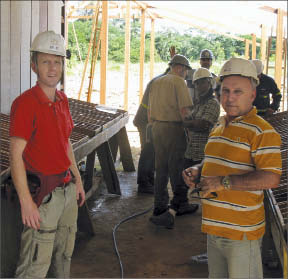Brazilian Gold (BGC-B) wants investors to get familiar with Brazil’s Tapajos region.
While the area in the north central part of the country is the largest alluvial gold district in Brazil – and third largest in the world – it has gone largely unexplored using modern exploration methods.
Covering roughly 140,000 sq. km, the geology is described a Proterozoic terrain with gold potential similar to eastern Canada, Western Africa and Western Australia.
That vast area has, by some estimates, turned out as much as 30 million oz. gold over the years via crude alluvial methods.
The largest modern discovery to-date in the region is Eldorado Gold‘s (ELD-T, EGO-N) Tocantinzinho project, which has proven and probable reserves of 49 million tonnes grading 1.25 grams gold for 2 million oz., and another 70 million tonnes grading 1.06 grams gold for 2.4 million oz. in the measured and indicated category.
Brazilian Gold’s stake in Tapajos comes from ten projects. One of these projects, Sao Jorge, is in the development stage, while two others have seen recent drilling.
Sao Jorge has indicated resources of 8.3 million tonnes grading 1.3 grams gold for 343,000 oz. gold, and inferred resources of 12.6 million tonnes grading 1.1 grams gold for 458,000 oz. gold.
That gives Brazilian 801,000 oz. gold. The company thinks that number will grow much larger by way of its current exploration program.
The program includes four rigs that will be used to drill 20,000 metres, with the aim of bringing the total resource up to 1.5 million oz. gold.
The specific economics of the project will develop in the coming weeks, when the first-ever preliminary economic assessment study gets released.
But Brazilian is already comfortable with its understanding of the geology. It says the property is underlain by various age and composition granites that host gold-bearing stockworks.
The deposit is 700 metres long by 60 metres wide, and has been delineated from surface to 200 metres depth by drilling.
The company’s interest in the deposit’s growth potential comes from an anomaly that stretches over a 1.4-km strike length. The deposit remains open at depth.
As for the metallurgy, the company says it can get recoveries in the low 90% range via a conventional gold recovery process of gravity, floatation and cyanidation.
If all goes according to plan, Brazilian says it will have Sao Jorge in production by the first quarter of 2014.
Next on the company’s radar is Rio Novo, a grassroots project whose development is key to Brazilian becoming a regional player.
Results from its latest four diamond drill holes were highlighted by 1.14 grams gold over 73 metres, 5.82 grams gold over 3 metres and 0.43 gram gold over 71.4 metres.
Brazilian says the quartz and sulphide veins that make up the mineralized zone at Rio Novo have been intersected over potentially economic widths and grades in all four holes, with mineralization extending from surface to 300 metres depth.
The project has seen garimpeiro mining of alluvials since the 1970s. It is situated 50 km southwest of Sao Jorge, and is accessible by the Transgarimpeiro Highway.
And while Rio Novo has proven its prospectiveness, it was another of Brazilian’s key projects in the area, Boa Vista, which grabbed the market’s attention in early March.
The assay results from a single hole at Boa Vista returned 1.4 grams over 102 metres – a result that moved the company’s stock price from the 70¢-range to the $1.50-range.
Brazilian has a right to earn a 51% stake in Boa Vista by making option payments and funding exploration activities over two years.
A common feature of the company’s key projects is good infrastructure. Boa Vista, Rio Novo and Sao Jorge are all road-accessible, and have access to grid power and labour and service companies.
Coupled with solid infrastructure is an experienced management team that has a penchant for doing big deals.
Brazilian’s chief executive, Ian Stalker, is the former chief executive of UraMin, which was sold to Areva for $2.5 billion. Stalker also served as a VP for Gold Fields (GFI-N, GOF-L) and COO of AngloGold Ashanti (AU-N).
Chairman Alvin Jackson was the former president and COO of EuroZinc Mining, which was sold to Lundin Mining (LUN-T) for $3.3 billion.
With strong leadership and plenty of exploration work ahead, Brazilian Gold will ensure gold investors become familiar with the mineral wealth of Tapajos.


Be the first to comment on "Brazilian Gold turns to Tapajos"